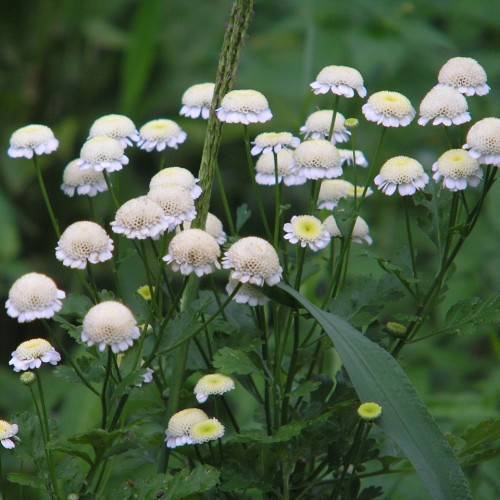
feverfew
Tanacetum parthenium 'White Pompon'
Cycle:
Herbaceous Perennial
Watering:
Average
Hardiness Zone:
5 - 8
Flowers:
Flowers
Sun:
Full sun
Leaf:
Yes
Growth Rate:
Low
Maintenance:
Moderate
Poisonous To Pets:
Yes
Drought Tolerant:
Yes
Care Level:
Medium
watering
Feverfew (Tanacetum parthenium 'White Pompon') should be watered every 7 to 10 days, depending on soil moisture and temperatures. It prefers evenly moist soil, but not overly saturated. Water the plant deeply, enough so that water runs out of the bottom of the pot, but be careful not to overwater, as too much water can cause root rot. During periods of extreme heat, the plant may need more frequent watering. At other times, especially during the winter when the plant enters dormancy, less water is needed.
sunlight
Feverfew (Tanacetum parthenium 'White Pompon') thrives in full sunlight, meaning at least 6-8 hours of direct sunlight each day. It does best when planted in a site with morning sun and afternoon shade, as the afternoon sun can be very intense and intense rays can burn the leaves. If a plant is grown in an area with too little sunlight, the foliage of the plant will have a pale look, and the stems and branches may become weak and sparsely branched. When grown in areas with too much sunlight, the leaves may curl and the flowers may be scorched.
pruning
Feverfew (Tanacetum parthenium 'White Pompon') is a disc-shaped, perennial flower that bears many white blooms with yellow centers from the middle of the summer until frost. Pruning is an important step to ensure that the plant is receiving enough air circulation and removing overgrown and dead branches for healthy growth. It is best to prune Feverfew early in the Spring before it begins to bloom. Start by removing any dead stems and branches that have died over the winter. Then start pruning the stems back, thinning out areas that have multiple stems to 1 to prevent overcrowding. This will improve air circulation, reduce disease pressure, and help the plant from becoming too woody. Overall, an annual pruning of the Feverfew will just be done in the Spring. This removes old foliage and encourages new, healthy growth throughout the summer. Pruning at this time will also help keep the plant from becoming too large in the garden and better maintain the desired shape.
